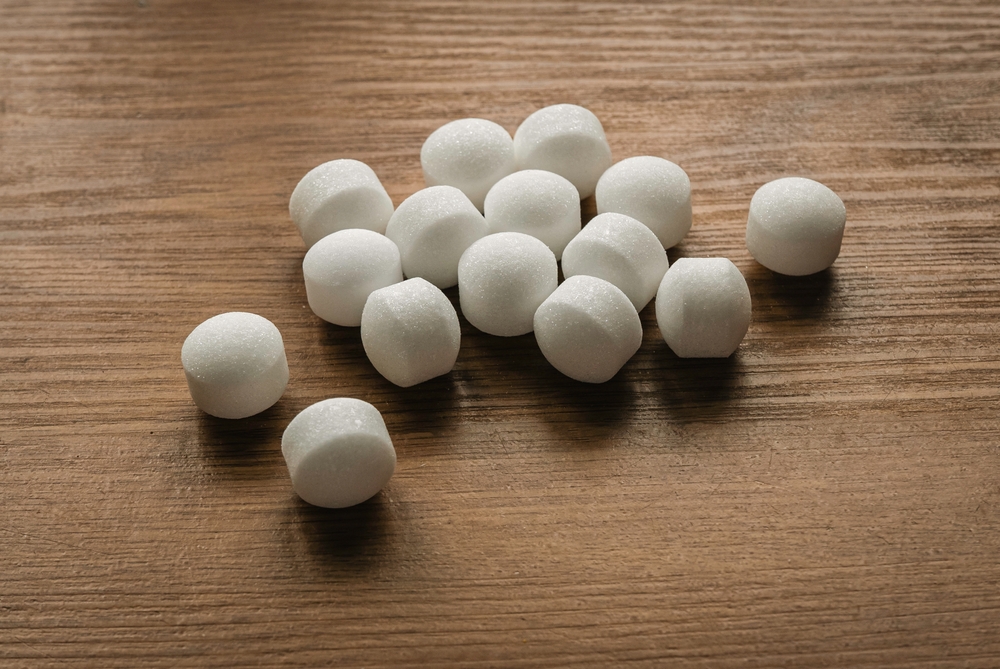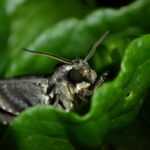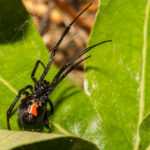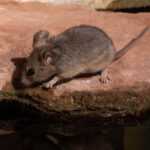Mothballs: Effective Solutions for Pest Control
Discover effective pest control solutions with mothballs. Learn how to use them safely and efficiently to keep your home pest-free. Read more now!
The Comprehensive Guide to Mothballs: Uses, Safety, and Alternatives
Mothballs protect clothes from moth damage by releasing toxic fumes. But how do they work, and are they safe? This guide answers these questions, explains the ingredients, discusses safety issues, and offers safer alternatives.
- Mothballs, primarily containing naphthalene and paradichlorobenzene, effectively repel clothes moths by releasing toxic vapors.
- Mothballs are classified as pesticides by regulatory agencies, which means their use is subject to specific legal and safety requirements.
- Improper use and outdoor application pose significant health risks to humans, pets, and the environment, so handle them cautiously and follow safety guidelines.
- Children can mistake these small balls for candy, increasing the risk of accidental ingestion and poisoning.
- Natural alternatives such as cedar chips, essential oils, and dried herbs provide effective pest control solutions without the toxic risks associated with these products.
Introduction to Moth Infestations
Moth infestations affect many households and can cause significant damage to clothing, fabrics, and other stored materials. Clothes moths, particularly species like Tineola bisselliella, thrive in dark, undisturbed spaces. These insects lay eggs on fabrics, and their larvae feed on natural fibers, creating holes and ruining valuable clothing.
To combat these pests, many people use products containing active ingredients such as naphthalene or paradichlorobenzene. These chemicals kill moths and larvae, but are also classified as toxic substances by the Environmental Protection Agency (EPA). Due to their potential to harm humans, pets, and wildlife, users must follow the label directions strictly. Misusing or overexposing can cause serious health risks and environmental contamination, so handle these products carefully and comply with EPA guidelines.
Moth Life Cycle and Behavior
Understanding the life cycle and behavior of moths helps control pests effectively. Moths undergo four stages: egg, larva, pupa, and adult. Female moths lay their eggs directly onto fabrics, especially those stored in closets or boxes for long periods. Once the eggs hatch, larvae emerge and begin feeding on the fibers, causing the most damage to clothing and textiles.
After feeding, larvae spin cocoons and enter the pupal stage, eventually transforming into adult moths. These adults then seek new places to lay eggs, continuing the cycle. Moths prefer storage areas that are dark, undisturbed, and have high humidity, making them ideal breeding grounds. Using moth repellents in these storage spaces helps deter moths from laying eggs and reduces infestation risk by interrupting their life cycle.
What Are Mothballs?
Moth balls and moth flakes are small, solid substances designed to repel insects, particularly clothes moths, which damage stored clothing and textiles. These tiny, potent balls serve many households, especially for protecting garments stored away for long periods. They come in various forms, including bars and crystals, which are solid insecticide formulations.
These products emit vapors that deter pests. When placed in storage spaces, the vapors permeate the air, creating an inhospitable environment for insects. Some people use them to deter animals, such as mice and other rodents, from storage areas, although these uses are not recommended. Their primary focus remains on preventing moth larvae from infesting fabrics, safeguarding your material goods from destruction.
But what exactly are these vapors, and how do they keep your clothes safe? The journey of understanding mothballs continues as we delve into their chemical composition and mechanisms.
Active Ingredients in Mothballs
These products rely on active ingredients: naphthalene and paradichlorobenzene. These chemicals act as potent insecticides, targeting clothes moths and their larvae. They present significant hazard due to their toxic chemicals, which pose serious health and environmental risks to humans, pets, and the environment if misused. Regulatory agencies have classified them as pesticides because of the potential harm they pose to pests and unintended targets, including naphthalene mothballs.
Naphthalene and paradichlorobenzene release toxic naphthalene vapors with a distinct smell that kill clothes moths and similar insects when contained within airtight environments. These vapors accumulate to high concentrations that exterminate pests, ensuring your stored items remain intact. Because exposure to naphthalene or paradichlorobenzene can cause kidney damage, handle these products with care. If a child or pet eats them, serious harm can result, requiring immediate medical attention. Even one mothball, if eaten, can pose a significant hazard and may cause a person or animal to become ill. If even one mothball is eaten, it can cause a person or animal to become ill and may require immediate medical attention. Contact a veterinarian if a pet ingests them or reach out to a poison control center if exposure occurs. This step helps maintain the integrity of your clothes.
As fumigants, these chemicals transform from a solid state directly into a gas, a process crucial for their pest-killing capabilities. Understanding the active ingredient in these substances helps to comprehend both the effectiveness of solids and the risks associated with mothballs.
How Mothballs Work
Mothballs work through a process called sublimation, which involves:
- The solid ball gradually converting into a gas without passing through a liquid phase.
- This gas, rich in toxic vapors, accumulates in enclosed spaces.
- Creating an environment hostile to clothes moths and their larvae.
You may notice the distinctive smell soon after placement, but the pest-repelling or eliminating effects may take time. These products remain effective as long as the vapors maintain sufficient concentration. However, the duration and effectiveness of mothballs may not always meet the expected results, as factors like storage conditions and how airtight the container is can impact performance.
The vapors target the clothes moth, a pest infamous for damaging stored valuable clothing. Their toxic nature kills both adult moths and larvae, safeguarding your textiles from destruction.
For maximum effect, use mothballs in airtight containers. This containment ensures the vapors reach lethal concentrations, providing effective pest control. Without proper containment, the effectiveness diminishes significantly.
Uses of Mothballs in Pest Control
Mothballs have long been a go-to solution for protecting valuable clothing and fabrics from destructive pests. Their primary use is to repel and kill clothes moths and their larvae, which are notorious for creating holes in stored clothing, carpets, and other textiles. By releasing toxic vapors, mothballs create an environment that is inhospitable to these insects, effectively preventing infestations in storage areas such as closets, attics, and basements.
In addition to targeting moths, some people attempt to use mothballs to deter other pests, including carpet beetles, rodents, and even snakes. However, while the strong smell and toxic chemicals may discourage some wildlife, using mothballs for this purpose is not recommended and can be illegal. The vapors can cause harm to humans, pets, and non-target wildlife, especially if used in open or outdoor spaces.
To ensure safety and effectiveness, always follow the directions on the product label. Improper use can lead to dangerous exposure to toxic vapors, putting both people and pets at risk. When used correctly, mothballs can help protect your clothing and storage areas from pest damage, but misuse can result in serious harm to your household and the environment.
Safety Concerns and Toxicity
Improper use can expose humans and pets to harmful toxic vapors, posing serious health risks. Despite widespread use, many people mistakenly believe these products are safe for home use without understanding their dangers.
They do not repel wildlife effectively and should not be used outdoors due to toxicity. Using them outdoors or for purposes not specified on the label is illegal. Regulatory agencies, such as the Florida Department of Agriculture and Consumer Services, often receive complaints about misuse, especially when people use them as wildlife repellents. Outdoor use can contaminate soil and water, endangering children, pets, and wildlife. The myth that they serve as a one-size-fits-all pest solution is dangerous and needs correction.
Understanding safety concerns is essential before using these products. From health risks to environmental impacts, research highlights the dangers associated with these toxic substances and the serious harm they may cause.
Legal and Environmental Considerations
The Environmental Protection Agency (EPA) in the United States classifies these products as pesticides and regulates their use. This classification helps monitor and control their use to prevent misuse and protect public health and the environment.
Mothballs are readily available to consumers, which increases the risk of misuse by those unaware of the legal and safety requirements.
However, illicitly imported products may lack proper evaluation or labeling. These unregulated products pose unknown risks, so buy quality products from reputable sources to ensure safety compliance.
Alternatives to Mothballs
Natural alternatives offer safer pest control options. Effective materials that deter moths without toxic chemicals include:
- Cedar chips
- Dried herbs
- Essential oils
- Citrus peels
Cedar wood, especially red cedar, contains natural oils that repel moths. Available in blocks and sachets, cedar offers a versatile and effective pest control solution.
Herbal sachets filled with dried herbs like lavender, rosemary, and thyme provide a pleasant-smelling method to deter moths. Similarly, essential oils such as peppermint and eucalyptus create DIY moth-repellent sprays.
Dried citrus peels from oranges and lemons also serve as natural moth deterrents while freshening storage areas. These alternatives protect your belongings and promote safer, eco-friendly pest control.
Natural Moth Repellent Options
For those seeking safer alternatives to traditional mothballs, a variety of natural moth repellent options are available. These solutions help protect your clothing and storage areas from moths and larvae without exposing your household to toxic substances.
Popular natural repellents include:
- Cedar: Red cedar wood contains natural oils that act as a moth repellent. Use cedar blocks, hangers, or sachets in closets and storage containers. Refresh or sand cedar periodically to maintain its effectiveness.
- Herbal Sachets: Fill small bags with dried herbs such as lavender, rosemary, thyme, or bay leaves. These herbs emit scents that deter moths while leaving a pleasant aroma in your storage spaces.
- Essential Oils: Create DIY sprays or sachets using essential oils like lavender, peppermint, eucalyptus, or clove. Apply these oils to cotton balls or fabric pouches and place them among stored clothes.
- Dried Citrus Peels: Orange and lemon peels can be dried and placed in storage areas to naturally repel moths and freshen the air.
- Cloves and Cinnamon Sticks: These spices can be added to sachets for additional moth-repelling power.
Pros and Cons: Natural repellents are non-toxic, safe for use around children and pets, and environmentally friendly. However, they may require more frequent replacement and may not be as potent as chemical mothballs in severe infestations. For best results, combine natural repellents with good storage practices and regular cleaning.
Proper Usage and Storage
To ensure effectiveness and safety, follow these guidelines:
- Use mothballs in sealed containers to allow toxic fumes to accumulate and target pests effectively.
- Follow label instructions to minimize harm.
- Avoid improper uses such as outdoor or open-space applications, which can cause dangerous exposures.
Mothball use is especially common in June and other summer months, when pest activity increases and people store seasonal clothing.
To prevent moth infestations in stored clothes:
- Store clothes in airtight containers or vacuum-sealed bags to block moths.
- Regularly clean and vacuum storage areas to remove larvae and eggs.
- Follow proper usage instructions to maximize effectiveness and minimize health risks.
Moth-Proofing Storage Containers
Properly moth-proof your storage containers to protect clothing and fabrics. Choose airtight containers that prevent moths and larvae from entering. Seal holes or gaps in storage areas to block access points, and keep the environment clean and dry to discourage moth activity.
For added protection, use mothballs inside these containers, but strictly follow label directions to avoid exposure to toxic substances. The Louisiana Department of Agriculture and Consumer Services advises using mothballs only in well-ventilated areas and never near food, pets, or children. Store clothing away from direct contact and secure storage areas to prevent accidental exposure. Combining these precautions with regular cleaning significantly reduces moth infestation risks.
Moth-Proofing Your Home
Moth-proofing your home goes beyond treating individual storage areas—it involves a holistic approach to prevent moth infestations and protect your valuable clothing and textiles throughout the house.
Comprehensive moth-proofing strategies include:
- Seal Entry Points: Inspect your home for cracks, gaps, or holes in walls, floors, and around windows or doors. Seal these openings to prevent moths and other pests from entering.
- Maintain Cleanliness: Regularly clean carpets, rugs, upholstery, and curtains to remove moth eggs and larvae. Pay special attention to rarely used rooms and storage spaces.
- Rotate and Air Out Clothing: Periodically take stored clothes out of containers, shake them, and expose them to sunlight. Moth larvae dislike light and movement.
- Monitor Humidity: Use dehumidifiers or moisture absorbers in basements, attics, and closets to keep humidity levels low, making these areas less attractive to moths.
- Use Moth Traps: Place pheromone traps in closets and storage areas to monitor and reduce adult moth populations.
- Educate Household Members: Make sure everyone in your home understands the importance of proper storage, regular cleaning, and safe use of moth repellents.
By implementing these moth-proofing measures, you can significantly reduce the risk of infestations, safeguard your clothing, and maintain a healthy, pest-free home environment.
Preventing Moth Infestations
Prevent moth infestations proactively by combining good storage practices with regular maintenance. Clean clothing thoroughly before storing, as food stains and body oils attract moths. Use airtight containers or vacuum-sealed bags to keep moths and larvae out, and inspect storage areas regularly for pests.
In addition to moth repellents or natural options, keep storage spaces dry and well-ventilated to make them less appealing to moths. Repair holes or cracks in closets and containers to eliminate entry points. Always follow pest control product directions to minimize harmful chemical exposure and protect your household, pets, and the environment. Staying vigilant and maintaining clean, secure storage helps prevent moth infestations and preserves valuable clothing.
Common Myths About Mothballs
Despite widespread use, many misconceptions surround mothballs. One common myth claims one ball is harmless, but these balls contain toxic chemicals that pose serious health risks to humans and pets if swallowed indoors. Even a single mothball, if eaten, can cause poisoning and should be treated as a medical emergency. This can cause illness from contaminated food.
Another misconception claims mothballs effectively repel all pests. Some believe they repel snakes and other wildlife outdoors, but studies show they do not effectively deter snakes, and such use is illegal. Mothballs specifically target moth control and do not serve as a universal pest solution. They also do not require direct contact with clothing to work; their fumes suffice.
Improper disposal is another issue. Dispose of mothballs according to local regulations due to their toxicity; do not discard them in regular trash. They lose effectiveness over time and should be replaced periodically.
Mothballs protect fabrics from clothes moths and larvae but carry significant safety concerns and health risks. Understanding active ingredients, proper usage, and alternatives helps make informed decisions.
Safer alternatives like cedar chips, dried herbs, and essential oils offer effective pest control without toxic dangers. Considering these options and following guidelines protects belongings and ensures household safety.
Frequently Asked Questions
What are mothballs used for?
People primarily use mothballs to repel clothes moths and protect fabrics from damage caused by moth larvae. They help preserve garments and textiles. They do not target animals such as rodents, snakes, or other wildlife.
What are the active ingredients?
Naphthalene and paradichlorobenzene serve as the main active ingredients, used for their insect-repelling properties.
Are they safe to use around pets and children?
They pose safety risks around pets and children due to toxic chemicals that cause harm if misused. Because they resemble candy, children might mistake them for treats. Accidental ingestion can cause serious poisoning. Keep mothballs out of reach of vulnerable individuals.
What are some natural alternatives?
Cedar chips, dried herbs, essential oils, and citrus peels provide effective natural alternatives. These options repel moths and offer pleasant aromas.
How should they be used and stored?
Place mothballs in sealed containers to prevent harmful chemical release and store them according to label instructions for safety. Proper usage and storage mitigate health risks.



